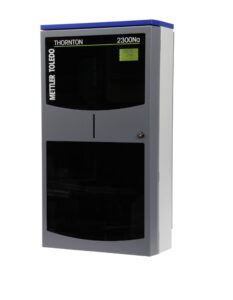Sodium Contamination in Power Plant Water Systems
In the power plant, long-term efficient generation depends on minimizing corrosion and deposition within the steam/water cycle. Therefore, sodium in the power cycle must be maintained at deficient levels to shield turbines from corrosion and scaling.
Water treatment performance and purity determination have depended on sodium measurement for nearly four decades. It is crucial for monitoring pure water treatment system performance as it is responsible for corrosion in high-value turbine blades and other cycle parts. Early contamination detection allows time for planning corrective action before condenser leaks enlarge and serious damage occurs.
Sodium measurement challenges
Accurate trace-level sodium measurement requires several precautions to achieve consistent results. The measurement uses an ion-selective sodium electrode, reference electrode, and sample conditioning to ensure response only to sodium. Conditioning consists of raising the pH of the sample to prevent interference from hydrogen ions. The design must also keep the reference electrode downstream of the sodium electrode to prevent the reference electrolyte from contaminating the sample before it is measured. A further challenge is that calibration at very low concentrations can be difficult because standards at that low level are vulnerable to contamination.
Determining sodium contamination at low ppb levels requires highly capable equipment. METTLER TOLEDO’s sodium analyzer combines accuracy and reliability with low maintenance. The 2300Na sodium analyzer uses industry-proven technology with innovative approaches that simplify calibration and improve measurement reliability.
The analyzer determines sodium levels by first conditioning the sample to prevent hydrogen ion interference by controlling the input flow and the pH, then uses a sodium ion-selective sensor to precisely determine sodium levels.
The unique combination of capabilities in the 2300Na Analyzer includes:
- Choice of analyzer enclosures for complete protection in the plant or a more accessible version for cleaner locations
- Unattended, automatic calibration for maximum accuracy and operator time savings
- pH measurement to confirm proper reagent addition and convenient grab-sample measurement for samples taken from the other locations in the plant
- Four analog outputs for sodium, adjusted pH, and temperature with choice of scaling to enable full integration into data acquisition or control system
- Automatic electrode conditioning maximizes analyzer uptime and reduces maintenance
Read more about sodium measurement in METTLER TOLEDO’s case study. It explains how a significant sugar company in Brazil, which supplies the country’s electricity grid with 1.5 million MWh from cogeneration, is preventing turbine corrosion and scaling through stringent measurement and control of sodium and silica levels.
Get the Case Study and Learn How to Prevent Turbine Corrosion and Scaling
